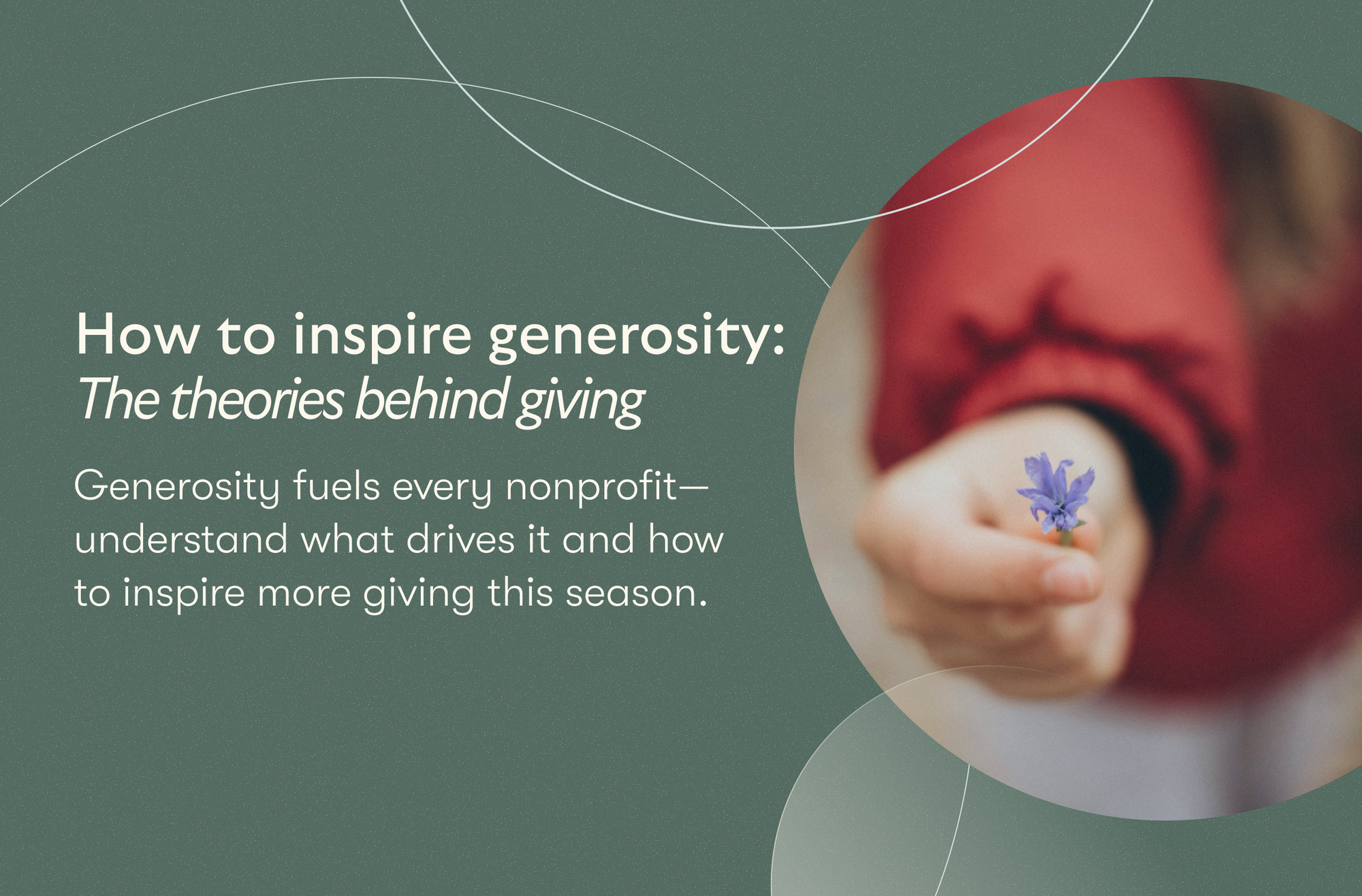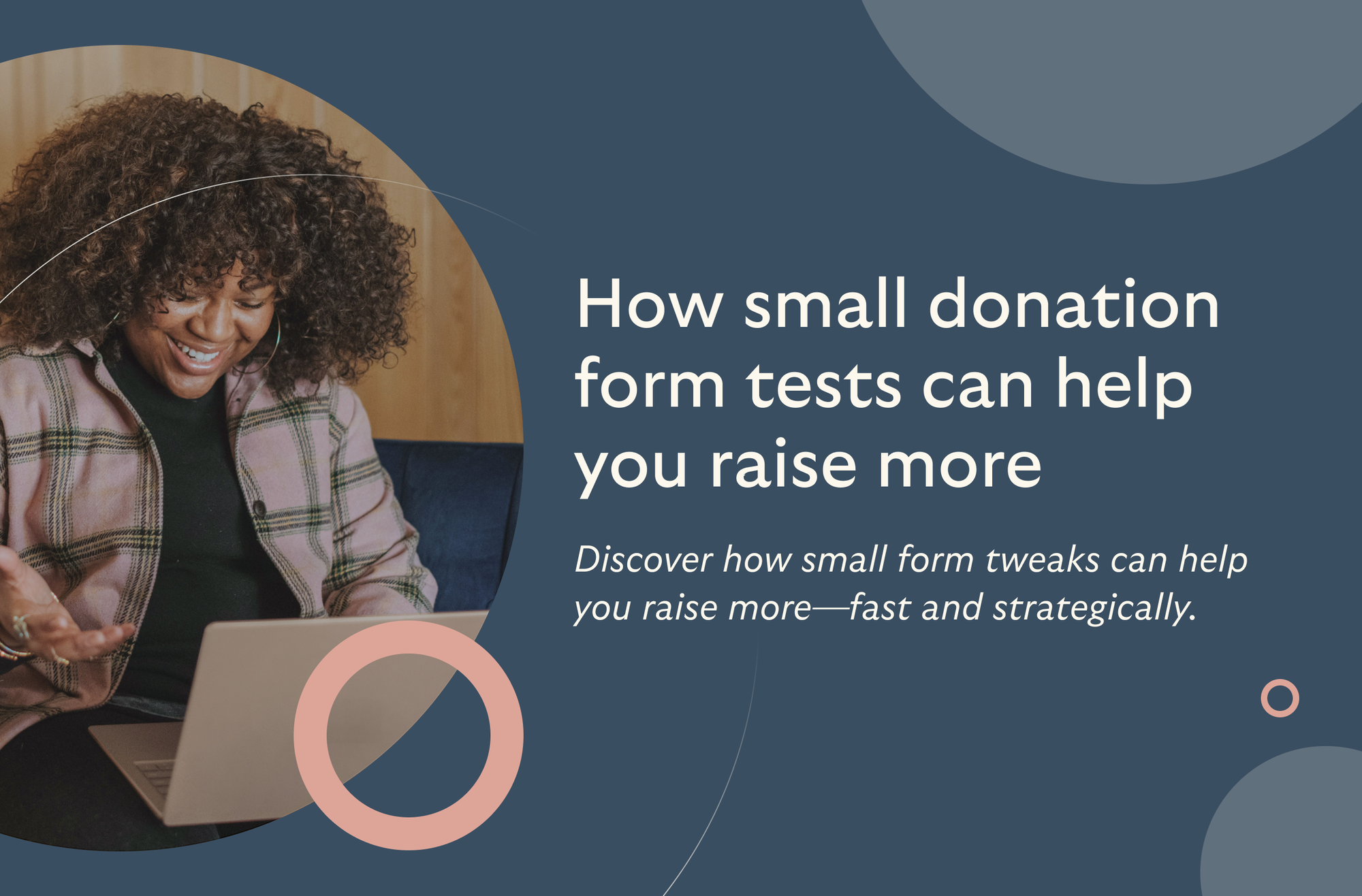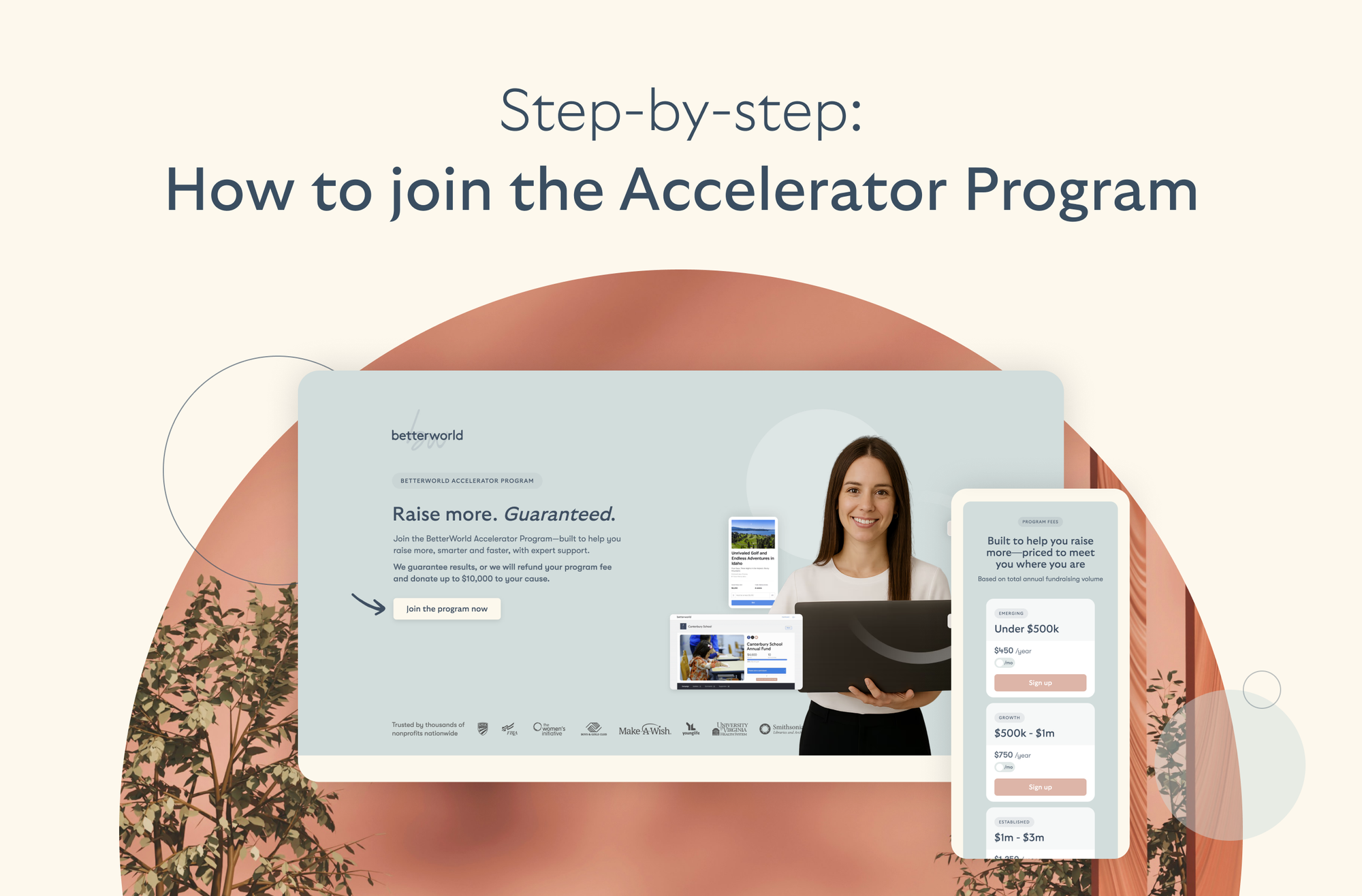Video Integration — boost the buzz around your online fundraising campaign
Time-saving – thoughtful automations save dozens of hours over your campaign
One-Click Checkout — our system will automatically charge the lucky winner
Text Message Notifications — keep your bidders engaged with text message notifications
Setting Up Your Annual Giving Campaign Strategy: Step-by-step Guide
By Whit Hunter

Annual giving isn’t just about raising money. It's about building a long-term relationship with your donors to keep your organization’s projects running year after year.
However, if you don’t have a clear plan, annual fundraising can feel like you're throwing darts blindfolded. A strategy gives you direction. It helps you figure out who to reach, how to ask, and when to follow up. Without a plan, you could miss out on opportunities to grow your donor base and meet your fundraising goals.
In this guide, we’ll walk through simple steps to build your annual giving strategy so you can make each campaign count. Let’s get started.
Step 1: Define Your Objectives
The first step in setting up your annual giving campaign is to define your objectives. Without clear goals, your efforts might lack focus, leading to wasted time and resources.
Establish Clear and Measurable Goals
To start, you need to be specific. Goals like "raise more money" or "gain new donors" are too vague.
Instead, set measurable goals, such as raising $50,000 by the end of the quarter or increasing your donor base by 20%. Remember, People who set specific goals are 43% more likely to achieve them. (Source)
With clear objectives, you give your team a roadmap to follow and a way to measure success throughout the campaign.
Identify the Specific Outcomes You Wish to Achieve
Once your goals are defined, consider the outcomes you're aiming for. Are you focused on boosting annual fundraising for a specific project, or do you want to increase recurring donations?
Perhaps you want to grow your email list or expand your community outreach. Identifying these outcomes will help you change your strategy to meet those needs.
Knowing the exact results you're working toward is key, whether it's engaging more donors or improving your digital presence.
Once you complete this step, your annual fundraising plan becomes more targeted and effective.
Check out our comprehensive guide for more information: Step-by-Step Guide to Establishing Fundraising Goals That Inspire Action.
Step 2: Understand Your Audience
The second step is to understand your audience. Your donors aren’t a one-size-fits-all group, so finding out who they are and what they prefer in terms of communication can help you reach them more effectively.
Research Donor Demographics and Interests
Start by doing your research. Find out who your donors are, their age groups, interests, and giving habits. This information helps you develop messaging that speaks directly to them.
Are your donors more likely to be young professionals looking for online giving options or older individuals who prefer direct mail? By identifying these details, you can better align your annual fundraising plan with what your supporters care about most.
Collecting this information from past donations, surveys, or even interactions on social media is valuable.
Segment Your Audience for Targeted Messaging
Once you’ve gathered donor information, the next step is segmentation. Group your audience based on shared characteristics, such as donation size, frequency, or preferred communication channels.
Segmenting allows you to send more personalized messages. For example, a donor who regularly gives $100 annually may be approached differently than someone who makes smaller, one-time donations.
Step 3: Build Your Annual Giving Team
A successful annual giving campaign requires a team effort. A strong, dedicated team ensures that all parts of the campaign run smoothly and efficiently.
Every member brings unique skills and perspectives, which makes it easier to handle various tasks, from planning to execution.
Team Roles and Responsibilities
Clearly defining the roles within your team helps avoid confusion and ensures that everyone knows what’s expected of them. Here are some key roles to consider for your annual giving team:
- Campaign Manager: Oversees the entire campaign, sets deadlines, and ensures goals are met.
- Communications Lead: Crafts messaging for emails, social media, and direct mail.
- Data Analyst: Tracks donor data and monitors campaign performance.
- Volunteer Coordinator: Recruits and manages volunteers for campaign support.
- Stewardship Officer: Handles donor relations and makes sure that donors feel appreciated and informed about their impact.
These roles can be filled by staff members, but in smaller nonprofits, volunteers might also step into these positions. Defining clear responsibilities prevents overlap and makes the campaign more efficient.
Utilize Volunteers
Volunteers can be an incredible asset in your annual giving campaign. They help extend your team’s reach without significantly increasing costs. They can assist in many areas beyond typical support tasks, stepping into key positions like social media manager, marketing manager, event manager, and more.
Their personal connection to your cause often makes them passionate advocates, which can lead to stronger engagement from potential donors.
Volunteers also add a community element to your campaign. When people see others donating their time, it can encourage them to contribute financially.
Step 4: Create a Compelling Case for Support
A well-crafted case for support is essential for convincing donors why they should give to your annual fundraising campaign. This is where you tell your organization’s story and show potential donors the impact they can make.
Articulate the Mission and Vision of Your Organization
The first part of your case for support should clearly state your mission and vision.
This gives donors a sense of who you are and what you’re striving for. It’s not enough to just say you’re helping people; you must show how your mission creates change.
Whether your focus is education, health, or community services, make sure the reader knows why your work matters and what long-term difference you're aiming to make. Donors are more likely to give when they understand the larger goal.
Focus on Current Specific Missions
While your overall mission is important, it’s just as essential to highlight specific projects or campaigns that need funding right now. Maybe you’re raising funds for a new initiative or expanding an existing program.
Share details about what this particular project will accomplish and why it’s urgent. Being specific helps donors connect their contributions to real, tangible results.
For instance, if you're raising funds for a youth program, outline exactly how the money will be used, such as providing scholarships or expanding resources.
Highlight the Impact of Previous Donations and Specific Projects
Donors want to see results, so include examples of how past donations have made a difference. Share success stories and data that show the positive outcomes of previous campaigns.
This could be an increase in the number of people you’ve helped, improvements in services, or specific projects that were funded through donations. By showing what has already been achieved, you build trust and inspire confidence that their donation will be used effectively.
Step 5: Develop a Multi-Channel Marketing Strategy
The fifth step is to engage donors through multiple platforms and ensure that your message reaches a wider audience. Your nonprofit should also connect with different groups in ways they prefer.
Use Online and Offline Tactics
Your marketing strategy should include both online and offline methods. For example, you can use email newsletters to provide updates on your annual fundraising plan, while direct mail appeals can reach supporters who prefer traditional communication.
A balanced approach using both online and offline tactics can help you reach different segments of your audience. Here are examples of each:
Online Tactics:
- Social Media Campaigns (Facebook, Instagram, Twitter)
- Email Marketing
- Search Engine Optimization (SEO)
- Online Ads (Google, Facebook Ads)
Offline Tactics:
- Direct Mail
- Phone Outreach
- Flyers and Posters at Community Events
- Local Media Coverage (radio, newspaper)
Be Consistent Across All Channels
Consistent messaging across all channels is essential. The tone and core message should stay the same whether you're communicating through Instagram, email, or direct mail.
It helps avoid confusion and reinforces your brand. For instance, if you're highlighting your annual fundraising campaign's goals, make sure the message on social media matches what you’re sending out in emails or presenting during in-person meetings.
Create a unified experience for your audience, no matter where they engage with your campaign.
Schedule Key Messages and Communication Touchpoints
The timing of your messages can make or break your marketing strategy. You must ensure steady communication throughout your campaign by scheduling key messages and touchpoints.
Plan out when to send specific emails, social media posts, or event reminders and ensure that your audience is frequently reminded of the campaign.
You can coordinate around special events, holidays, or other moments when donors may feel more inclined to give, such as during year-end appeals or Giving Tuesday.
A clear timeline keeps your campaign organized and effective.
Step 6. Personalize Donor Outreach
A personalized touch can make your communication stand out in a world filled with generic messages. Did you know that 90% of people in the U.S. find personalized marketing appealing? Also, 72% say they only respond to messages that are tailored to them. (Source)
Donors are more likely to pay attention and engage with your cause when you personalize your outreach.
Let us help you raise more! Use BetterWorld’s free, easy fundraising tools!
Personalize Your Communication
Think about how you feel when someone remembers your name or recalls a past conversation. It feels good, right? The same goes for your donors.
Use their names in your messages and reference their previous contributions or interests. Instead of sending the same email to everyone, segment your donor list based on factors like donation history or areas of interest.
This way, your annual giving efforts speak directly to what matters most to each person.
Track Responses to Improve Future Outreach
Pay attention to how donors respond to your messages. Did they open your email? Did they click on a link? Did they donate?
Tracking these responses helps you understand what works and what doesn't. Use this information to adjust your approach in future campaigns.
Over time, this will make your annual fundraising plan more effective and help build stronger relationships with your supporters.
Don't Be Pushy
While it's important to ask for donations, reaching out too often can overwhelm your donors. Nobody likes to feel pressured.
A good rule of thumb is to ask for donations only once every 30 days. Find a balance by planning how frequently you send requests. Instead of asking for donations every week, consider sharing stories or updates about how their support is making a difference.
Your aim is to keep them engaged without making them feel like they're only being contacted when you need something. Remember, it's about building a lasting relationship, not just securing a one-time gift.
Step 7: Select your Fundraising Solution
Let’s face it, running an annual fundraising campaign can get overwhelming pretty quickly. You have donors to engage, events to plan, and funds to raise. How do you keep all of that organized without pulling your hair out?
The answer is simple: you need the right fundraising platform. It’s like having a toolkit that makes every part of your campaign easier to manage.
However, picking the right platform isn’t just about convenience. It’s about ensuring you’re using a solution that helps you reach your goals efficiently, keeps your data secure, and engages your donors in a way that builds long-term relationships.
One Platform for All Fundraising Solutions: BetterWorld
If you’ve been searching for a way to handle all aspects of your annual giving campaign without juggling multiple platforms, BetterWorld is the answer.
Our online fundraising platform is built with nonprofits in mind, offering everything you need in one place. Here’s how it can make your campaign smoother:
- Donor Engagement Software
Donors are the heart of any fundraising campaign, and keeping them engaged is key. With BetterWorld’s engagement tools, it’s easy to stay connected.
2. Online Auction Software
Looking to add a bit of fun to your annual fundraising? Auctions are a great way to get people excited about giving, and BetterWorld’s auction software makes the process seamless.
3. Online Fundraising and Donation Tool
BetterWorld’s all-in-one donation software is designed to handle every type of event—whether virtual, in-person, or hybrid. You can set up your campaign in just a few minutes, share your donation link (no downloads needed), and start raising funds right away.
Some standout features include:
- Shareable donation links with no downloading or pre-registration required.
- Unlimited access to all fundraising tools.
- Zero advertising and a strict no data-selling policy.
- Full customer support will guide you through each step of your campaign.
The best part? It's all free. BetterWorld is committed to helping nonprofits do more good without charging for their tools.
Imagine running your campaign with all the professional features you need without worrying about extra costs eating into your donations.
Bring your annual fundraising ideas to life. Sign up with BetterWorld today and see how easy fundraising can really be!
Step 8: Launch Your Campaign
After careful planning, it's time to launch your annual giving campaign. This pivotal step will bring your efforts to the public's attention.
A well-planned launch can generate excitement and encourage early participation from supporters.
Set a Launch Date and Create a Countdown
Pick a specific launch date to give your campaign a clear starting point. It helps you organize your tasks and lets supporters know when they can begin contributing.
Creating a countdown builds anticipation. Share the countdown on your website and social media platforms to remind everyone that your annual fundraising campaign is about to begin. Your early goal is to spark interest and encourage people to spread the word.
Keep the Momentum Going Throughout the Annual Giving Campaign
Launching your campaign is just the beginning. To keep supporters engaged, provide regular updates on your progress.
Share stories about how donations are making a difference. Celebrate milestones, such as reaching 25% or 50% of your goal. These updates keep your annual fundraising plan lively and encourage donors to stay involved.
Consistent communication helps maintain enthusiasm and can lead to increased support over time.
Be at the Forefront
Being at the forefront means staying visible and engaged with your audience. Use various channels like social media, emails, and community events to connect with supporters.
Respond to questions and thank donors publicly when appropriate. By being active and approachable, you show your commitment to the cause.
Visibility helps build trust and encourages others to participate in your annual giving campaign.
Step 9: Expressing Gratitude
After your annual fundraising efforts are over, it's important to thank everyone who contributed. Expressing gratitude is a crucial step in building lasting relationships with your donors and supporters.
Send Thank You Messages
Taking the time to send personalized thank-you messages can make a big difference. Whether it's an email, a handwritten note, or a phone call, acknowledging each person's contribution shows that you value their support.
No matter the size of the donation, every bit helps, and everyone deserves recognition. Don't forget to thank those who volunteered their time or helped spread the word about your campaign.
Here are a few examples of Thank You messages:
- "Dear Sarah,
Thank you for your generous donation of $50 to our annual fundraising campaign. Because of your support, we were able to provide new books to our community library.” - "John,
We truly appreciate your contribution of $500. Your donation helped us purchase sports equipment for the after-school program.” - "Hi Emma,
I wanted to personally thank you for volunteering at our fundraiser last weekend. Your help in organizing the event contributed to us raising over $2,000 for our annual fundraising plan. This means we can offer free workshops to job seekers in our community."
Including specific details about how their donation or assistance will be used makes the message more meaningful. It helps donors and supporters see the direct impact of their generosity.
Donor Retention Through Stewardship
Expressing gratitude is also a key part of donor retention. Stewardship involves keeping donors and supporters informed and engaged after they've contributed or helped in some way.
Share updates on how their support is making a difference. You can do it through newsletters, social media posts, or special events.
For instance, you might send out a monthly email showcasing stories like:
- "Thanks to your contributions to our annual giving campaign, we've launched a new literacy program that's helping over 100 adults learn to read."
- "With the funds raised from our annual fundraising ideas, we've been able to plant 200 trees in the local park, improving the environment for everyone."
By sharing these results, you reinforce the value of their support. Nurturing these relationships also increases the chances that they will participate in your future annual fundraising ideas.
Step 10: Track and Analyzing Results
After your annual fundraising campaign wraps up, looking back and seeing how things went is important. Tracking and analyzing the results helps you understand what worked well and what didn't.
Real-Time Data
Use data analytics during your campaign to monitor donor engagement and progress as it happens. With real-time data, you can see which strategies are effective and which need adjustment.
For example, suppose you notice that donations increase whenever you share stories about individuals impacted by your work on social media. You might decide to share more of these stories to boost engagement.
If you see that email open rates are low, you could try changing the subject lines or sending emails at different times of the day.
Various software tools can help with real-time tracking:
- Google Analytics: This tool lets you monitor traffic to your website or donation page. You can see how many people visit, where they're coming from, and which pages they view most.
- Fundraising Platforms: Many online fundraising platforms and donor management systems offer features to track donations, donor engagement, and campaign progress in real-time. They can show you who is donating, how much, and through which channels.
- Email Marketing Tools: Programs like MailChimp or Constant Contact provide real-time data on email campaigns, such as open rates and click-through rates.
Using these tools, you can adjust your annual fundraising plan while the campaign is still running.
Review and Adjust
Once the campaign is over, take time to evaluate the overall performance. Look at metrics like total donations, number of donors, and the effectiveness of different fundraising ideas you tried.
For instance:
- Total Donations: Did you meet your fundraising goal? If not, how close did you get?
- Donor Breakdown: How many donors were new versus returning? Did certain groups donate more than others?
- Channel Effectiveness: Which methods brought in the most donations? Was it email campaigns, social media posts, or events?
Suppose your online auction raised more funds than expected, but your fundraising dinner didn't cover its costs. You might focus more on virtual events in your next annual giving campaign.
An Annual Giving Campaign Is More Than Raising Funds
Now that you have learned the steps to set up your annual giving campaign, it's time to put your plan into action.
Remember, annual fundraising is more than just asking for donations. It's about building lasting relationships with your supporters. Keep in touch with them throughout the year and show how their contributions make a real difference. Make them feel valued and encourage them to stay involved.
As you move ahead, be open to learning and adjusting your approach. Each year brings new opportunities to grow and improve. Here's to a rewarding journey ahead!

Join 100,000+ amazing nonprofits, organizations, and fundraisers on BetterWorld

Let our FREE fundraising tools help you raise more funds with less effort








